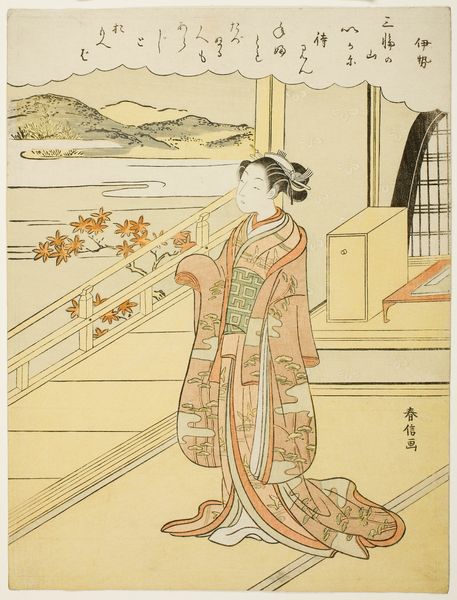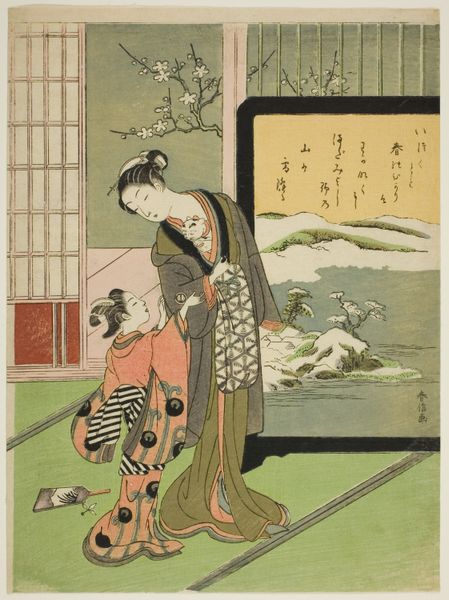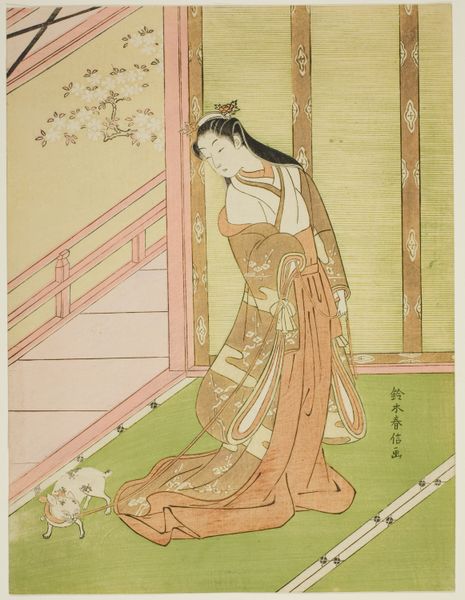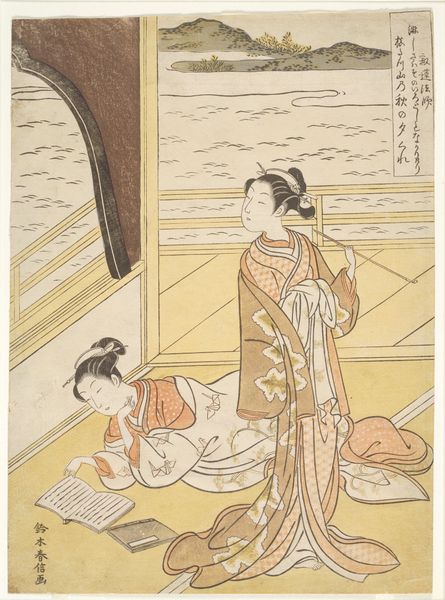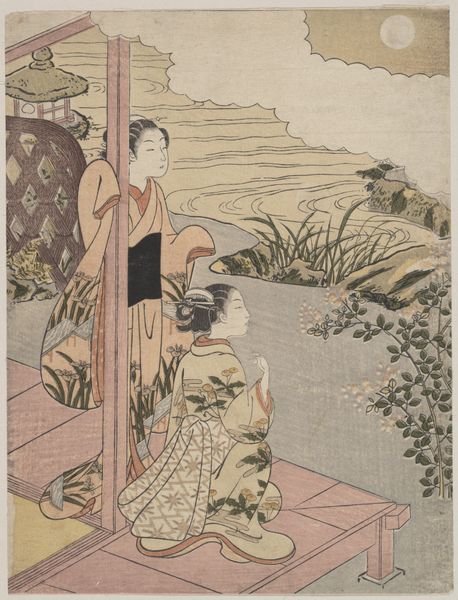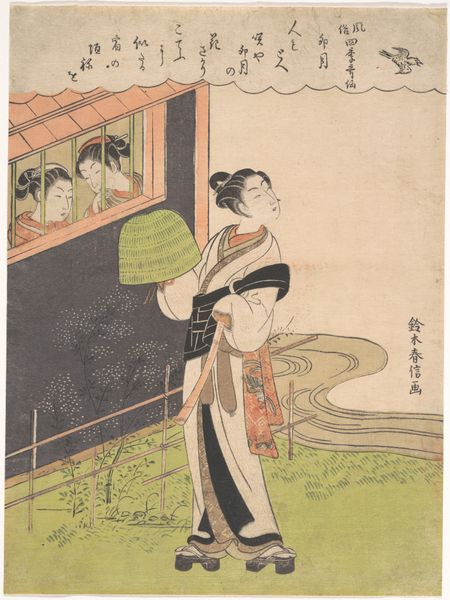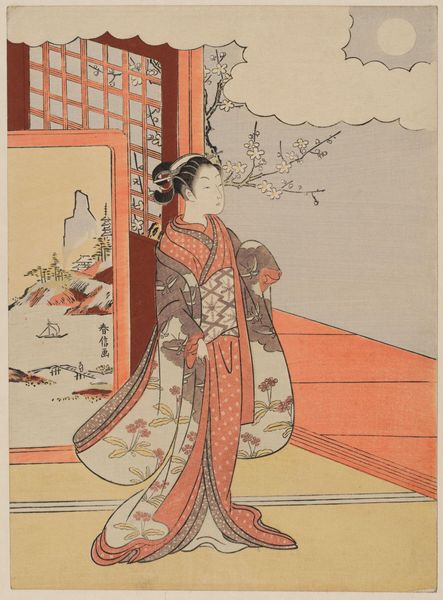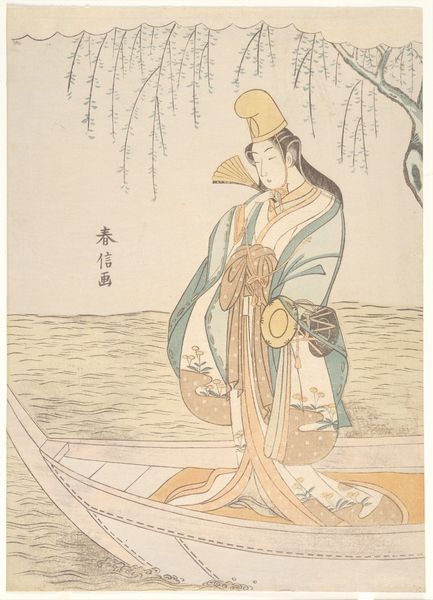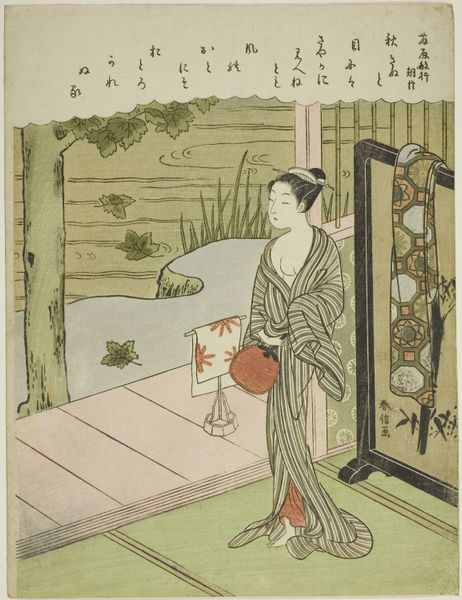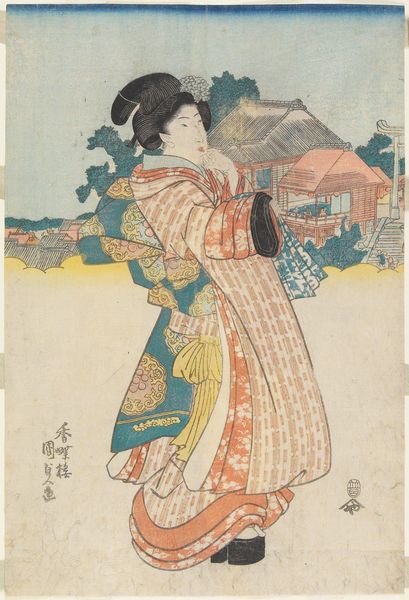
Poem by Minamoto no Saneakira Ason, from an untitled series of Thirty-Six Immortal Poets c. 1767 - 1768
0:00
0:00
print, woodblock-print
# print
#
asian-art
#
landscape
#
ukiyo-e
#
figuration
#
woodblock-print
Dimensions: 11 × 8 1/4 in.
Copyright: Public Domain
Curator: Suzuki Harunobu’s woodblock print, “Poem by Minamoto no Saneakira Ason, from an untitled series of Thirty-Six Immortal Poets,” made around 1767 or 1768, captures a serene moment. What are your initial thoughts? Editor: I’m immediately struck by the contrast between the woman's delicate form and the flat, almost graphic quality of the landscape. The limited color palette also contributes to its stillness; it's very calm, meditative. Curator: That stillness is quite intentional, I believe. This work belongs to the ukiyo-e tradition, a genre deeply entwined with the socio-cultural fabric of Edo-period Japan. We see the rising merchant class finding pleasure in these depictions of everyday life, celebrated actors, courtesans, and even classic poetry reinterpreted in modern settings. Editor: Yes, I see that tension between classical themes and contemporary representation in the woman's elegant pose and the surrounding geometric architecture. How do these formal devices emphasize the underlying themes? Curator: Note how she's framed by both indoor and outdoor space—a suggestion, perhaps, of the liminal spaces women occupied in Japanese society at that time. The poem inscribed in the sky above her speaks of longing and lost love. Harunobu is drawing a parallel between the woman's personal experience and a larger historical narrative. Her elegant clothing subtly reflects the societal expectations, gender roles, and complex social stratification of the time. Editor: I find the compositional choices equally fascinating. The division of space, with its stark horizontals, flattens perspective. It draws the viewer’s eye to a dialogue between pattern, like on her kimono, and plane, evident in the constructed environment she inhabits. It seems like a delicate interplay of texture and surface. Curator: Exactly. It speaks volumes about how the artist skillfully integrates multiple layers of meaning, reflecting on the ever-evolving roles and perceptions of women within the framework of tradition and modernity. The woman’s figure becomes a site where historical narratives intersect with contemporary life. Editor: I’ll remember that—a fusion of visual elements communicating the nuanced cultural context of this intriguing era. Curator: A fruitful insight indeed—illuminating the way artistic mastery can articulate profound social reflections.
Comments
No comments
Be the first to comment and join the conversation on the ultimate creative platform.
